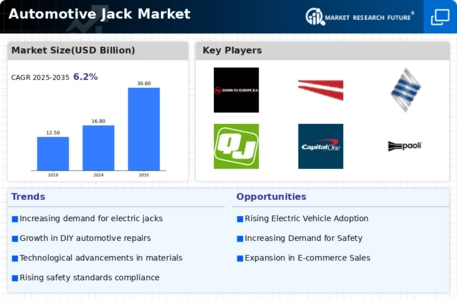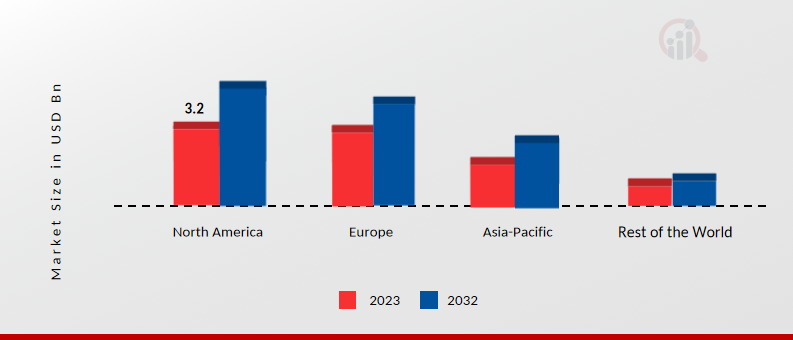Growing DIY Culture
The rising do-it-yourself (DIY) culture among vehicle owners is significantly influencing the Global Automotive Jack Market Industry. More individuals are opting to perform their own vehicle maintenance and repairs, driven by the desire for cost savings and a sense of accomplishment. This trend is particularly evident in regions with a strong automotive enthusiast community. As a result, the demand for user-friendly automotive jacks is increasing, as consumers seek tools that are both effective and easy to operate. The growing popularity of online tutorials and forums further supports this trend, encouraging more people to invest in quality automotive jacks for home use.
Rising Vehicle Ownership
The increasing rate of vehicle ownership globally is a primary driver for the Global Automotive Jack Market Industry. As more individuals acquire personal vehicles, the demand for automotive maintenance tools, including jacks, escalates. In 2024, the market is projected to reach 16.8 USD Billion, reflecting the growing necessity for vehicle servicing equipment. This trend is particularly pronounced in emerging economies, where urbanization and rising disposable incomes contribute to higher vehicle sales. Consequently, the automotive jack market is likely to experience sustained growth as vehicle owners seek reliable tools for maintenance and repairs.
Technological Advancements
Technological innovations in automotive jacks are transforming the Global Automotive Jack Market Industry. The introduction of electric and hydraulic jacks enhances user convenience and efficiency, appealing to both professional mechanics and DIY enthusiasts. These advancements not only improve lifting capabilities but also ensure safety during vehicle maintenance. As the market evolves, manufacturers are increasingly focusing on integrating smart technology into jacks, such as automated lifting systems. This shift towards more sophisticated tools is expected to attract a broader customer base, thereby contributing to the market's growth trajectory, which is anticipated to reach 30.8 USD Billion by 2035.
Market Trends and Projections
The Global Automotive Jack Market Industry is characterized by various trends and projections that indicate its future trajectory. With the market expected to grow from 16.8 USD Billion in 2024 to 30.8 USD Billion by 2035, the industry is poised for substantial expansion. The anticipated CAGR of 5.66% from 2025 to 2035 suggests a steady increase in demand for automotive jacks, driven by factors such as technological advancements, rising vehicle ownership, and a growing DIY culture. These trends highlight the dynamic nature of the market, as manufacturers adapt to changing consumer preferences and regulatory requirements.
Market Expansion in Emerging Economies
The expansion of the automotive market in emerging economies is a crucial driver for the Global Automotive Jack Market Industry. Countries in Asia-Pacific and Latin America are witnessing rapid growth in vehicle sales, leading to an increased demand for automotive maintenance tools. As these regions develop their automotive infrastructure, the need for reliable jacks becomes more pronounced. This growth is expected to contribute to a compound annual growth rate (CAGR) of 5.66% from 2025 to 2035, indicating a robust market outlook. Manufacturers are likely to focus on these emerging markets to capitalize on the rising demand for automotive jacks, further driving industry growth.
Regulatory Standards and Safety Regulations
Stringent regulatory standards and safety regulations are shaping the Global Automotive Jack Market Industry. Governments worldwide are implementing guidelines to ensure the safety and reliability of automotive tools, including jacks. Compliance with these regulations often necessitates the adoption of higher-quality materials and manufacturing processes, which can drive up production costs. However, this also leads to the development of safer and more durable products, ultimately benefiting consumers. As safety becomes a paramount concern for both manufacturers and users, the market is likely to see a shift towards jacks that meet or exceed these regulatory standards, fostering consumer trust and market growth.



















